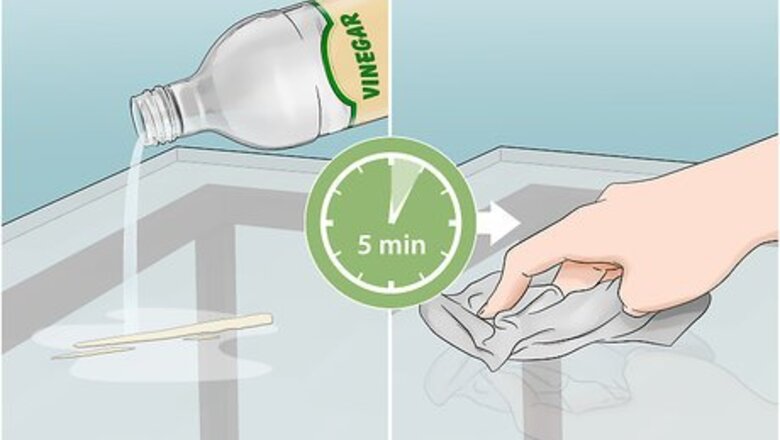
views
Using Household Items to Dissolve Glue

Pour some white vinegar over the hardened glue. Dump out enough vinegar to completely soak the dried substance. Depending on the size of the hardened glue, let it soak into the glue for 3-5 minutes. Next, blot away the vinegar and glue with a dry paper towel. Continue wiping until you’ve completely removed the glue from the surface. If you’re only working on a small area, start with 1 to 3 teaspoons (4.9 to 14.8 mL) of vinegar before moving on to larger amounts. Make sure that all of the glue is covered with vinegar, or else it might not fully dissolve. Test the vinegar on a small part of the surface to make sure that vinegar won’t do any damage. If the glue was stuck to a smaller item, like a plastic plate, then be sure to wash the object after the glue comes off. This remedy works especially well with craft and school glue.
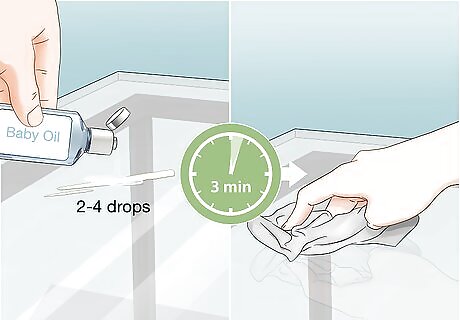
Drip 2-4 drops of oil onto dried superglue to dissolve it. Start dissolving the glue by pouring a small amount of baby or cooking oil onto the affected area. Wait at least 3 minutes for the oil to soak into the hardened substance. Once the glue is saturated, take a clean rag or paper towel and swipe at the portion of dried glue. In a pinch, you can use petroleum jelly instead of oil. This natural remedy works with most surfaces, such as plastic and glass.

Create a paste of baking soda and coconut oil to get rid of glue on your skin. Remove any solidified glue from your skin by scrubbing over it with a mixture of equal parts baking soda and coconut oil. Let the remedy soak into the glue for at least 10 minutes before you try wiping it off. Salt and water are also an effective glue-removing mixture if you don’t have toothpaste or baking soda on hand.

Spray lubricant on hardened craft glue to remove it. Take a can of WD-40 and liberally apply it over the hardened spot of glue on a nearby surface. Once the lubricant is applied, wait 3-5 minutes for the product to erode away at the dried glue. Next, wipe off the glue and lubricant mixture with a clean rag or paper towel. If the glue still doesn’t come off after 1 application of WD-40, feel free to repeat these steps until the glue is fully dissolved. WD-40 also works especially well with school glue.

Add some acetone to an area of dried superglue. Pour enough product over the affected area so that the glue is completely submerged. While the acetone is soaking into the glue, wait at least 3 minutes so the agent can start dissolving the glue. After a few minutes have passed, blot up the acetone with a rag or paper towel. Try not to inhale any the acetone fumes during this process by working in a well ventilated area.
Applying Commercial Solvents

Work in a well-ventilated area whenever you use solvents. Anytime you work with any kind of harsh chemical, always be sure to stay in a room with fresh, flowing air. Regardless of the project, aim to wear a face mask or other kind of protective gear that filters any air that you inhale. If an area isn’t naturally well-ventilated, see if you can turn on a fan or open a window to create better air circulation. Try to avoid breathing in any paint solvent directly, as this can lead to future health issues. If the weather is nice, consider working outdoors.
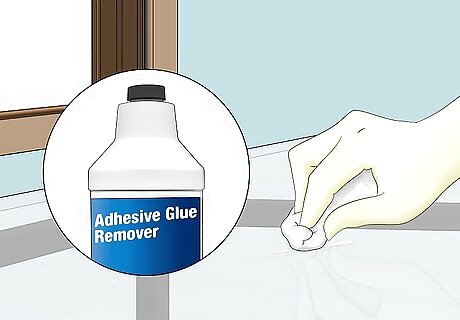
Apply some adhesive remover to any dried tape or glue residue. Cover the residue with a thin layer of a commercial solvent. Allow it to sit according to the label instructions. Then, use an old rag to scrub the product into the dried glue. Work in sections as you wipe away the glue, and feel free to add more product as you go. If the solvent comes in a bottle, pour directly over the glue, or apply it to a rag and blot it onto the area. For large areas of dried glue, you might prefer to use a spray-on solvent.

Soak dried superglue with mineral spirits. Use however much product is needed to drench the dried glue in your project. Wait at least 3 minutes for the agent to erode away at the glue before you continue. Next, blot away any excess fluid and try to pull apart any glued surfaces or objects. This works especially well with industrial glue or glue that you’ve used in a carpentry or hardware project. While similar to paint thinner, mineral spirits has a much less noticeable scent.
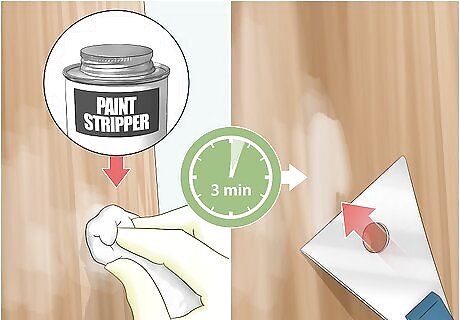
Add commercial paint stripper to dissolve stubborn wallpaper glue. If natural remedies won’t dissolve the paint from your walls, opt for a stronger agent. To apply stripper, you can either use a soaked rag, or you can use a bottle to spray the walls directly. Wait around 3 minutes for the paint stripper to chip away at the glue before you try pulling off any wallpaper. Once the glue has dissolved, be sure to blot away and dry off any remaining product. If you’re trying to remove a lot of wallpaper at once, work on 1 patch of glue at a time. You don’t want to overwhelm the room with chemical fumes by tackling too much of the wall at once.



















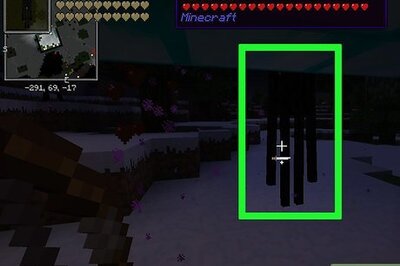
Comments
0 comment